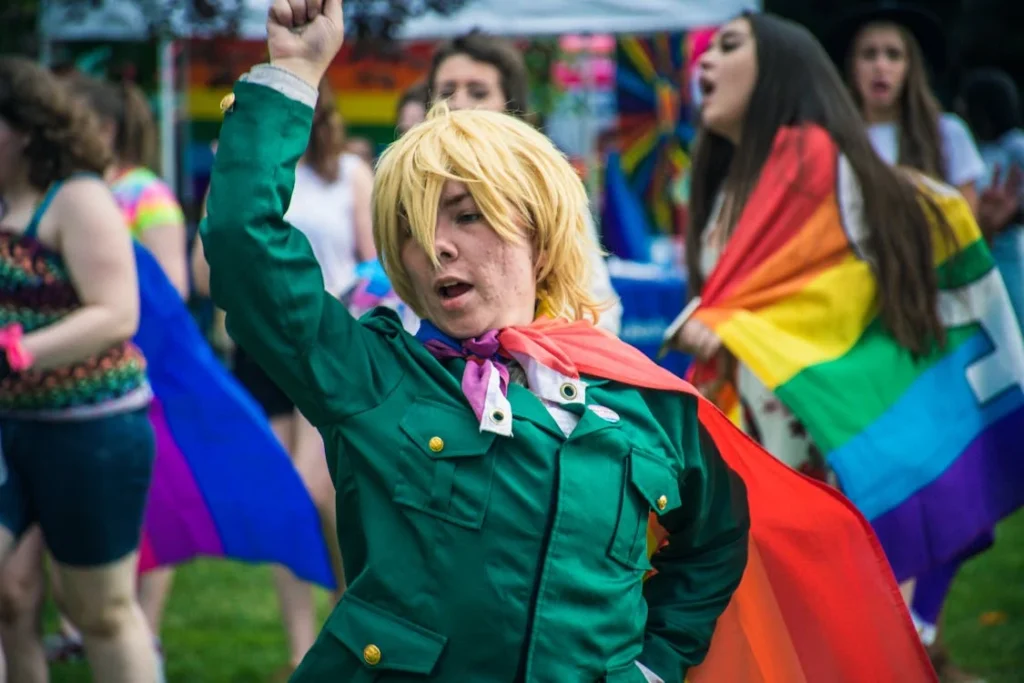For decades, disability was seen as something to be hidden, pitied, or “overcome.” But today, disability pride movements around the world are challenging these outdated views. People with disabilities are asserting their rights, celebrating their identities, and demanding full inclusion in society. These movements are not just about awareness; they are about changing laws, breaking down stigma, and redefining what it means to live with a disability.
Disability pride is about shifting the focus from limitations to empowerment. Instead of seeing disability as a personal struggle, it highlights the importance of accessible environments, equal opportunities, and societal acceptance. While the idea of disability pride may be relatively new in some cultures, in others, it has deep historical roots. Each movement is shaped by the unique cultural, political, and social landscape of its region.
From the United States and Europe to Asia, Africa, and Latin America, disability pride movements are reshaping the world. They are influencing government policies, improving access to education and employment, and changing how disability is represented in media and public spaces. Understanding these movements helps us appreciate the progress that has been made and recognize the work that still needs to be done.
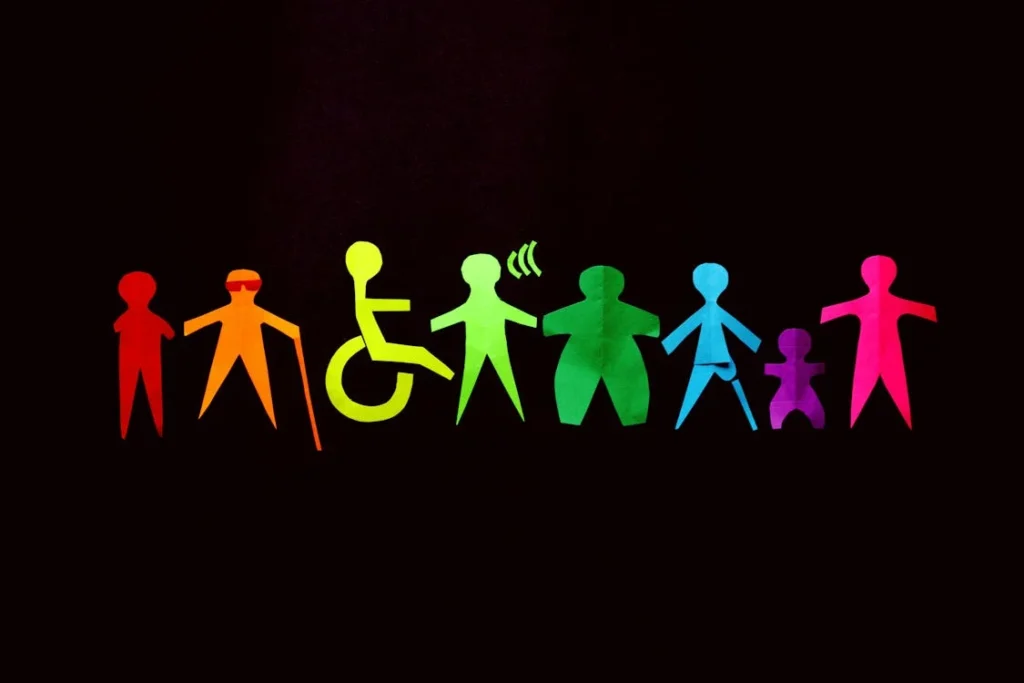
The Origins of Disability Pride Movements
The idea of disability pride emerged as a response to discrimination, exclusion, and the medical model of disability, which focused on “fixing” individuals rather than addressing societal barriers.
Activists around the world began pushing back against these outdated perspectives, demanding equal rights and full participation in society.
The Influence of the Civil Rights Movement
In many ways, disability pride movements were inspired by other civil rights movements. In the United States, the disability rights movement gained momentum in the 1960s and 1970s, alongside the fight for racial and gender equality.
Activists such as Judith Heumann and the leaders of the 504 Sit-in in 1977 helped bring disability rights into mainstream political discussions.
Their efforts led to landmark legislation, including the Americans with Disabilities Act (ADA) in 1990, which prohibited discrimination against disabled individuals in employment, education, and public spaces.
This legal recognition helped shift the conversation from seeing disability as a medical issue to a social and political one.
It set the foundation for disability pride, emphasizing that people with disabilities are not “broken” but are part of a diverse human experience that deserves respect and inclusion.
The Global Expansion of Disability Pride
While the disability pride movement started gaining traction in Western countries, it soon spread to other parts of the world. In Europe, activists worked to pass the European Accessibility Act, ensuring better access to public services, transport, and digital platforms.
The United Nations Convention on the Rights of Persons with Disabilities (UNCRPD), adopted in 2006, further reinforced the idea that disability rights are human rights.
In Asia, Latin America, and Africa, disability pride movements have taken different forms, influenced by cultural beliefs and societal structures.
In some regions, strong community networks have helped push for local policy changes, while in others, international advocacy has played a key role in advancing accessibility and legal protections.
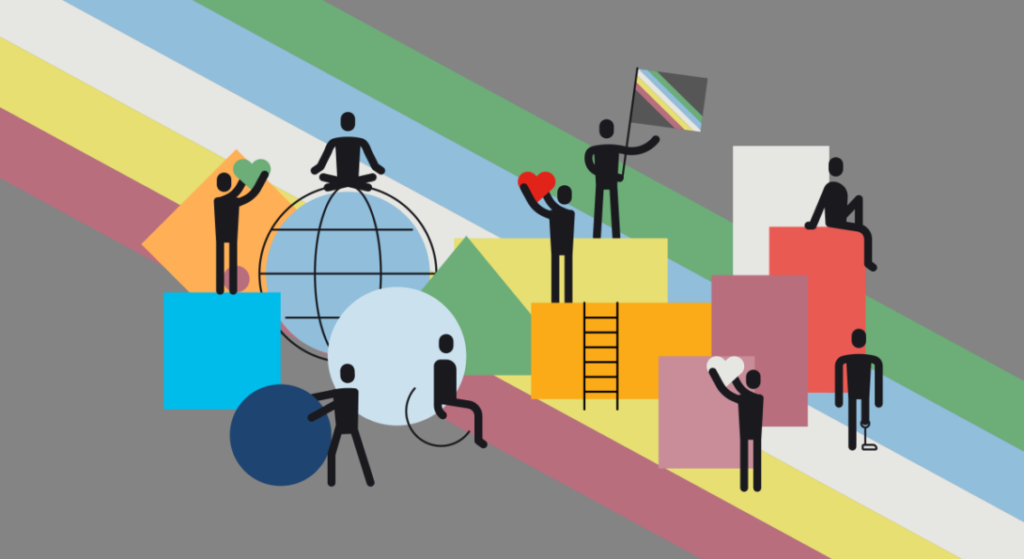
Disability Pride Movements Around the World
Disability pride movements have taken shape in different ways across the world, reflecting the unique cultural, political, and social landscapes of each region.
While the core message remains the same—challenging stigma, advocating for rights, and celebrating disability identity—the approaches and challenges vary.
The United States and the Rise of Disability Pride Parades
In the United States, the disability pride movement is closely linked to major legislative victories, such as the Americans with Disabilities Act (ADA).
Since the 1990s, disability pride parades have been held in cities like Chicago, New York, and San Francisco, where people with disabilities and their allies march to celebrate inclusion and challenge stereotypes.
These events have helped shift public perception, reinforcing the idea that disability is not something to be ashamed of. Participants embrace assistive devices, mobility aids, prosthetics, and adaptive technology as symbols of empowerment rather than limitations.
The movement has also influenced corporate policies, pushing businesses to adopt more inclusive hiring practices and improve workplace accessibility.
Despite progress, challenges remain. Many public spaces are still inaccessible, and ableism (discrimination against disabled individuals) persists in hiring practices, healthcare, and education.
Disability pride activists continue to fight for greater accessibility and representation in all areas of society.
Europe: Legal Protections and Cultural Shifts
European countries have made significant progress in disability rights, thanks in part to strong legal frameworks. The European Accessibility Act and national policies in countries like Germany, the UK, and Sweden have improved public infrastructure and workplace inclusion.
However, the disability pride movement in Europe is still growing, with activism taking different forms across the continent.
In the UK, the Nothing About Us Without Us movement has pushed for greater representation of disabled people in policymaking.
Disability pride events in London and Edinburgh celebrate identity and challenge stereotypes, while grassroots organizations work on increasing accessibility in everything from public transport to digital content.
In Scandinavian countries, a cultural emphasis on social welfare has helped improve accessibility, but disability pride movements are focused on challenging the perception of disabled individuals as passive recipients of government aid.
Activists advocate for a shift toward empowerment, ensuring that disabled people have leadership roles in politics, business, and media.
Asia: Tradition, Stigma, and Changing Attitudes
In many parts of Asia, disability pride movements face unique challenges due to deeply ingrained cultural beliefs. Traditional views in some societies associate disability with karma, fate, or past misdeeds, leading to social stigma.
Families may hide or overprotect disabled members, limiting their opportunities for education and employment.
However, change is happening. In India, disability rights activists have made significant progress with the passage of the Rights of Persons with Disabilities Act (RPWD) in 2016, which expanded legal protections.
Organizations like the Disability Rights Alliance and National Centre for Promotion of Employment for Disabled People (NCPEDP) continue to push for better enforcement of accessibility laws and greater representation in government and media.
In China, disability rights efforts have been influenced by state policies rather than grassroots movements, but advocacy groups are emerging to challenge discrimination in employment and education.
In Japan, where accessibility in public transport and infrastructure is relatively advanced, activists are now focusing on breaking social barriers, pushing for more inclusive workplaces and education systems.
Africa: Grassroots Movements and Policy Struggles
Disability pride movements in Africa have faced challenges due to economic barriers and limited government support.
In many countries, accessibility laws exist but are poorly enforced, making it difficult for people with disabilities to access education, healthcare, and employment. Social stigma also plays a role, with disability often viewed as a curse or punishment in some communities.
Despite these challenges, grassroots movements are making progress. In South Africa, activists have successfully pushed for stronger legal protections, and organizations like the South African Federation for the Disabled (SAFOD) advocate for disability rights at the national level. In Kenya and Uganda, disabled individuals are using social media to challenge stigma and promote accessibility.
One of the most powerful developments in African disability advocacy is the increasing visibility of disabled athletes.
Events like the Paralympics and local adaptive sports programs have helped shift perceptions, showing that disability is not a limitation but a different way of experiencing the world.
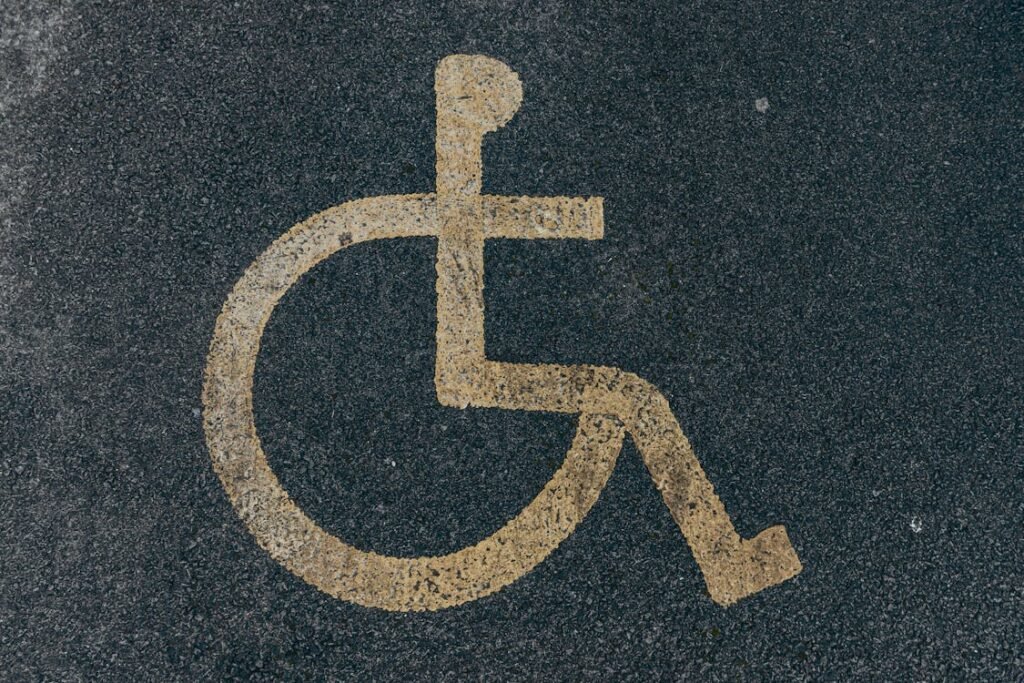
How Disability Pride Movements Are Driving Global Change
Disability pride movements are not just about visibility and celebration; they are actively shaping policies, improving accessibility, and changing the way societies perceive disability.
By challenging outdated narratives and pushing for systemic reforms, these movements are making a lasting impact on laws, workplaces, education systems, and cultural representation.
The Influence on Government Policies and Disability Rights
One of the biggest achievements of disability pride movements worldwide is the push for stronger legal protections.
Activists have fought for—and in many cases, won—laws that ensure accessibility, protect against discrimination, and promote equal opportunities in education and employment.
The United Nations Convention on the Rights of Persons with Disabilities (UNCRPD), adopted in 2006, has been a major milestone in global disability rights.
Signed by over 180 countries, it legally binds governments to take action toward inclusion. Many disability pride movements have used this treaty as a foundation for demanding stronger national laws.
In countries like Brazil and Argentina, disability activists have played a key role in shaping accessibility laws that require businesses and public institutions to provide accommodations.
In Mexico, disability pride movements have led to improved job opportunities for disabled workers, with companies adopting inclusive hiring policies.
However, the enforcement of these laws remains a challenge. In many parts of the world, accessibility mandates exist but are ignored due to lack of oversight or funding.
Disability pride activists continue to push governments to not only pass legislation but also implement it effectively.
Changing Workplace Inclusion and Economic Participation
Employment remains one of the biggest barriers for disabled individuals, but disability pride movements are forcing industries to rethink their hiring practices.
The traditional view of disabled individuals as dependent or incapable of full employment is being replaced by a growing recognition of their skills, adaptability, and potential.
Many corporations have responded to this shift by creating more inclusive workplaces. Companies like Microsoft, Google, and Accenture have launched disability hiring programs that actively recruit, train, and support disabled employees.
In India, startups and social enterprises are leading the way in providing employment opportunities for disabled professionals, proving that inclusion is not just a social responsibility but also an economic advantage.
Disability pride movements emphasize that accessibility in the workplace is not just about hiring but also about creating environments where disabled employees can thrive.
This includes accessible office spaces, flexible work arrangements, assistive technologies, and inclusive leadership training.
Education Reform and Accessible Learning
Another major area where disability pride movements are making an impact is education. Historically, disabled students were often excluded from mainstream schools or placed in segregated institutions with limited resources.
Disability activists have challenged this approach, advocating for inclusive education models where students with disabilities learn alongside their peers.
In Finland and Canada, inclusive education policies ensure that schools provide accommodations such as braille textbooks, sign language interpreters, and assistive technology.
In the United States, the Individuals with Disabilities Education Act (IDEA) guarantees that disabled students receive the support they need to succeed in public schools.
In countries where disability awareness is still growing, disability pride movements are working to ensure that education systems become more inclusive.
In India, organizations like Enable India and the Vidya Sagar Institute are leading initiatives to make schools and colleges more accessible.
In Africa, advocacy groups are pushing for government funding to support disabled students, ensuring they have access to scholarships, assistive devices, and adapted curriculums.
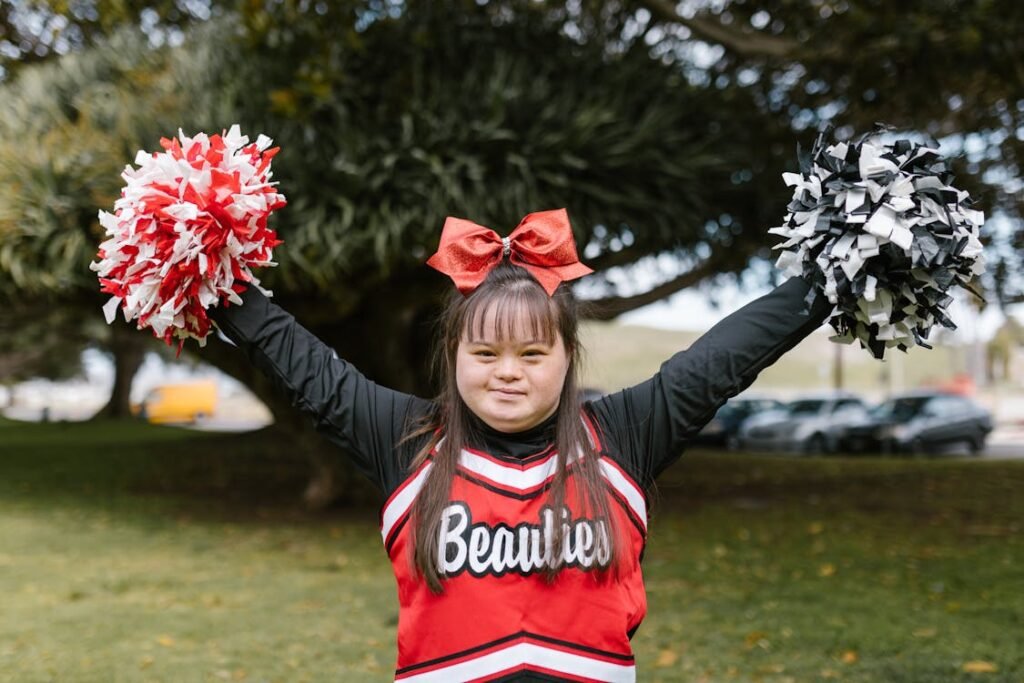
Representation in Media and Popular Culture
One of the most powerful ways disability pride movements are shaping change is through better representation in media, entertainment, and public spaces. Historically, disability was either ignored or misrepresented in films, television, and literature.
When disabled characters did appear, they were often portrayed as tragic figures, villains, or inspirational stories meant to evoke pity. However, disability pride movements have challenged these narratives, pushing for more authentic and diverse representations.
Breaking Stereotypes in Film and Television
In many cultures, the way disability is portrayed on screen influences public attitudes. In the past, non-disabled actors often played disabled characters, reinforcing the idea that disability was something to be “acted out” rather than a real experience.
Today, disability activists are calling for authentic representation, ensuring that disabled actors play disabled roles and that disability stories are told with accuracy and depth.
Hollywood has begun to respond to these demands. Films like CODA (which featured deaf actors in lead roles) and shows like Atypical (which focused on autism) have helped shift perceptions by presenting nuanced, humanized portrayals of disability.
In the UK, shows like Sex Education introduced disabled characters without making their disability the central focus of their storylines, promoting normalization rather than tokenism.
In India, where disability representation in mainstream media has been limited, filmmakers are beginning to explore more inclusive storytelling.
The success of films like Margarita with a Straw, which depicted a young woman with cerebral palsy navigating independence and relationships, showed that audiences are ready for more diverse narratives.
However, there is still much work to be done to move away from the common themes of disability as suffering or divine punishment.
Social Media and Disability Activism
Beyond traditional media, social media has given disability activists a platform to amplify their voices, educate the public, and connect with global movements.
Platforms like Instagram, TikTok, and Twitter have allowed disabled individuals to challenge stereotypes and share their personal experiences directly with audiences.
Hashtags such as #DisabilityPride, #NothingAboutUsWithoutUs, and #DisabledAndProud have gained traction worldwide, bringing attention to accessibility issues, employment discrimination, and the importance of representation.
Disability influencers and activists, such as Imani Barbarin, Haben Girma, and Dr. Amy Kavanagh, use social media to advocate for policy change, challenge ableism, and promote inclusive practices.
In countries where mainstream media still lacks disability representation, social media has become a crucial tool for activism. In Africa and parts of Asia, where disability is often stigmatized, disabled individuals have used digital platforms to share their stories and push for inclusion.
Online communities provide a sense of belonging and solidarity, proving that disability pride is not confined to a single region but is truly a global movement.
Advertising and Inclusive Marketing
The corporate world is also beginning to recognize the importance of disability representation in marketing and branding.
Global brands like Nike, Tommy Hilfiger, and Microsoft have introduced adaptive clothing lines, accessible technology, and inclusive advertising campaigns that feature disabled models and influencers.
This shift is significant because it normalizes disability in everyday life. Instead of portraying disability as something extraordinary or rare, these brands integrate it into mainstream culture, reinforcing the message that disabled individuals are consumers, professionals, and trendsetters just like anyone else.
However, disability activists emphasize that representation must go beyond marketing. Companies that feature disabled individuals in their advertisements must also ensure their workplaces, products, and services are genuinely accessible. True inclusion is about systemic change, not just visibility.
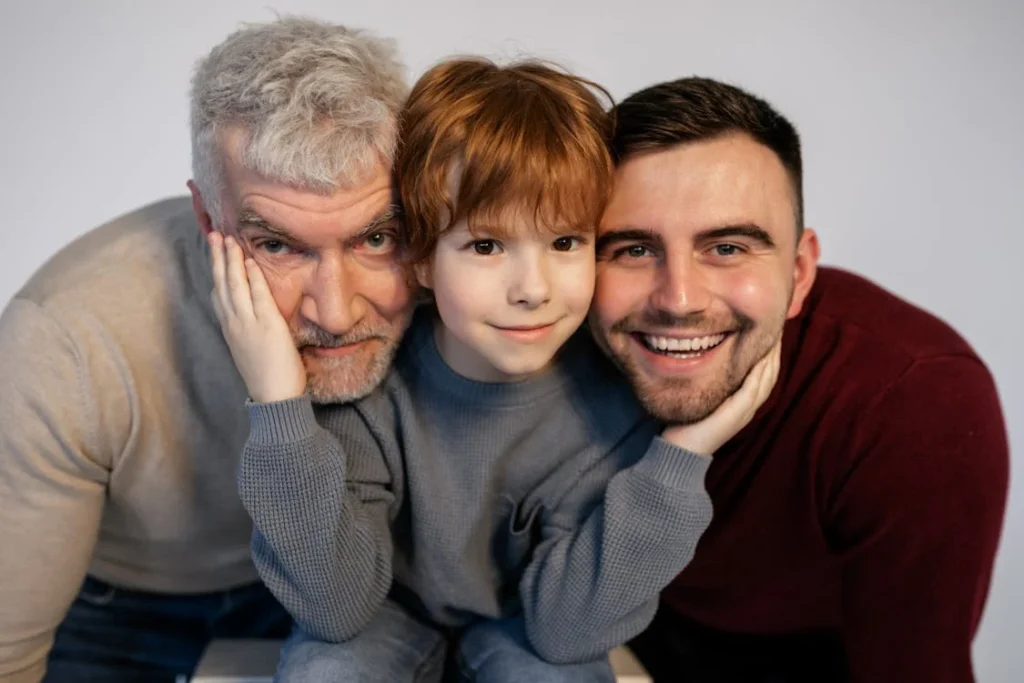
The Role of Family and Community in Disability Pride Movements
While disability pride movements are often associated with activism, policy changes, and media representation, one of the most fundamental influences on a person’s experience with disability is their immediate family and community.
Cultural attitudes toward disability begin at home, shaping how individuals with disabilities see themselves and how they are treated by society.
The level of support, acceptance, and encouragement within families and local communities plays a crucial role in the success of disability pride movements.
Family Support: A Key Factor in Disability Identity
For many disabled individuals, the first messages they receive about their disability come from their families. In cultures where disability is still stigmatized, families may overprotect their disabled members, limiting their independence out of fear or societal pressure.
In some cases, families may even feel ashamed of disability, leading to isolation, lack of educational opportunities, or even neglect. This can create significant emotional barriers, making it difficult for disabled individuals to embrace self-confidence and advocate for their rights.
On the other hand, in families where disability is accepted as a natural part of life, disabled individuals are often empowered to pursue education, employment, and social activities.
Parents who encourage independence, provide access to assistive devices like prosthetics, and advocate for inclusive environments help foster a strong sense of self-worth and confidence.
Disability pride movements emphasize the importance of family involvement in breaking down stereotypes and supporting disabled individuals in achieving their full potential.
Many disability activists have shared personal stories of how family support influenced their journey.
Some recall moments where their parents fought against school policies that denied them access, while others highlight siblings who helped them navigate inaccessible environments.
These stories show that disability pride is not just about systemic change—it starts with personal empowerment at home.
The Impact of Community Acceptance on Disability Inclusion
Beyond family, local communities play a major role in shaping attitudes toward disability. In many cultures, close-knit communities influence how disabled individuals are perceived and treated.
If a community views disability as a weakness or burden, disabled individuals may struggle to participate in social, economic, or religious activities.
However, when communities embrace accessibility and celebrate disability diversity, they create an environment where disabled individuals can thrive.
In some parts of the world, disability pride movements have succeeded because of strong community-led initiatives.
For example, in Ghana, disability organizations have worked within local villages to educate people about the importance of inclusion, leading to improved support networks for disabled individuals.
In India, self-help groups for parents of disabled children have helped shift attitudes, showing that disability is not a curse but a difference that should be accommodated.
Religious and cultural traditions also shape community attitudes. In societies where religious institutions play a strong role in daily life, their stance on disability can significantly impact inclusion efforts.
When places of worship make their spaces accessible, encourage participation, and publicly support disability rights, it sends a powerful message that disabled individuals belong in all aspects of community life.
The Role of Peer Support and Mentorship
One of the most empowering aspects of disability pride movements is the emphasis on peer support and mentorship. Disabled individuals often find strength and confidence when they connect with others who share similar experiences.
These connections help counter feelings of isolation and provide practical guidance on navigating accessibility challenges.
Peer mentorship programs, both in-person and online, have helped disabled individuals gain access to education, employment, and social opportunities.
In many disability pride events, mentorship is a key component, where experienced activists and professionals guide younger individuals on self-advocacy, assistive technology, and legal rights.
For individuals using prosthetics, peer support groups offer a space to discuss challenges, share success stories, and build confidence.
Learning from others who have adapted to prosthetic use helps reduce anxiety and encourages a more positive outlook on disability.
Organizations like the Amputee Coalition in the U.S. and India’s Jaipur Foot initiative have recognized the importance of community-driven rehabilitation, proving that social support is just as important as medical care in the disability experience.
Why Family and Community Support Matter for the Future of Disability Pride
As disability pride movements continue to evolve, increasing focus must be placed on engaging families and communities in inclusion efforts.
Legal protections and accessibility laws are crucial, but real change happens when the people closest to disabled individuals—parents, siblings, teachers, neighbors—embrace a culture of acceptance and empowerment.
Future disability advocacy efforts must ensure that education programs reach not only policymakers and businesses but also households and local community leaders.
When families are equipped with the right knowledge and tools to support their disabled members, and when communities actively work toward accessibility, the foundation for disability pride becomes stronger than ever.
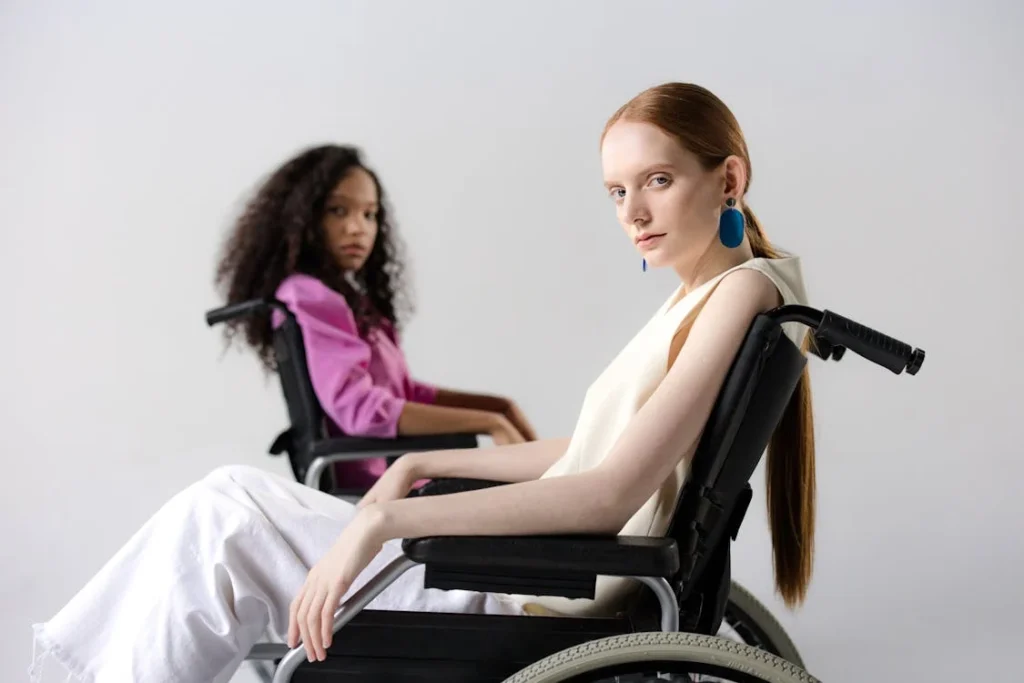
The Future of Disability Pride Movements: Challenges and Opportunities
While disability pride movements have made significant progress in shifting cultural perceptions and pushing for legal reforms, challenges remain.
Accessibility gaps, workplace discrimination, and deeply ingrained societal biases continue to limit opportunities for disabled individuals.
However, with the growing momentum of disability activism, there are promising opportunities for further progress in inclusion, innovation, and representation.
Bridging the Gap Between Policy and Implementation
One of the biggest challenges facing disability pride movements worldwide is the disconnect between laws and real-world accessibility. Many countries have strong disability rights laws on paper, but enforcement remains inconsistent.
Governments often lack the resources, political will, or public pressure to implement accessibility measures effectively.
For example, in India, the Rights of Persons with Disabilities Act (RPWD) 2016 mandates accessibility in public spaces, education, and employment.
However, many buildings, schools, and transport systems remain inaccessible due to poor enforcement. Similarly, in Latin America, while many nations have signed international disability rights agreements, accessibility improvements are slow due to economic constraints and lack of infrastructure investment.
Disability pride movements are working to close this gap by increasing public accountability. Social media campaigns, legal challenges, and grassroots advocacy efforts are putting pressure on governments and businesses to follow through on their commitments.
The next phase of disability activism will likely focus on holding institutions accountable and ensuring that accessibility is not just a legal requirement but a practical reality.
Technology and Innovation: The Role of Assistive Devices
Advancements in assistive technology have opened new possibilities for disabled individuals, and disability pride movements are advocating for greater accessibility to these innovations.
From prosthetic limbs with sensory feedback to AI-powered communication devices, technology is transforming how disabled people interact with the world.
However, access to assistive technology remains unequal. In wealthier nations, disabled individuals can benefit from cutting-edge prosthetics, smart wheelchairs, and adaptive software, but in many developing countries, even basic assistive devices are unaffordable or unavailable.
Disability pride activists are pushing for governments and corporations to invest in making assistive technology more accessible and affordable for all.
At Robobionics, we believe that innovation should serve the needs of the entire disability community, not just those who can afford high-end solutions.
Our work in developing cost-effective, durable prosthetic limbs is part of a larger movement to ensure that assistive technology reaches those who need it most.
The future of disability inclusion must involve greater collaboration between engineers, healthcare professionals, and disability activists to create solutions that work in diverse economic and cultural contexts.
The Role of Intersectionality in Disability Pride
Disability is not a singular experience—it intersects with race, gender, socioeconomic status, and other identities. Recognizing these overlapping challenges is crucial for making disability pride movements truly inclusive.
For example, women with disabilities often face double discrimination, both as disabled individuals and as women. In many parts of the world, they are less likely to receive education, employment, or healthcare than their male counterparts.
Similarly, disabled individuals from marginalized racial or ethnic backgrounds often encounter additional barriers due to systemic discrimination.
Disability pride movements are increasingly acknowledging these intersectional challenges, advocating for more diverse leadership and ensuring that disability activism includes all voices.
The future of the movement will depend on its ability to address these complexities and push for broader, more inclusive policies that consider the unique challenges faced by different disability communities.
The Growing Influence of Disability Culture
Beyond legal rights and accessibility, disability pride movements are also reshaping cultural narratives. From music and art to literature and social media, disabled individuals are claiming space in creative industries and redefining what it means to be part of mainstream culture.
Disability-led theater productions, independent films featuring disabled actors, and books written by disabled authors are gaining more visibility.
The Paralympics, once seen as a niche event, is now a globally recognized celebration of athletic excellence. Disability fashion influencers are redefining beauty standards, showing that representation goes beyond politics—it is also about self-expression and belonging.
The next step for disability pride movements is to further integrate disability culture into everyday life.
When disabled individuals are not just included but celebrated in all areas of society, the movement will have achieved its most ambitious goal: a world where disability is not an exception, but a natural part of human diversity.
Conclusion
Disability pride movements have come a long way, but the fight for full inclusion is far from over. Across cultures, these movements are challenging outdated perceptions, pushing for stronger legal protections, and advocating for greater accessibility in workplaces, schools, and public spaces. The growing influence of disabled voices in media, technology, and activism is reshaping global conversations about disability rights and identity.
While challenges remain—such as enforcement of accessibility laws, economic disparities, and cultural stigmas—there is also immense opportunity for change. With continued advocacy, technological advancements, and increased public awareness, the future of disability pride movements looks bright.
At the heart of disability pride is a simple yet powerful message: disability is not a limitation—it is a part of human diversity that deserves to be recognized, respected, and celebrated. By working together, we can build a world where accessibility, dignity, and opportunity are available to all.



